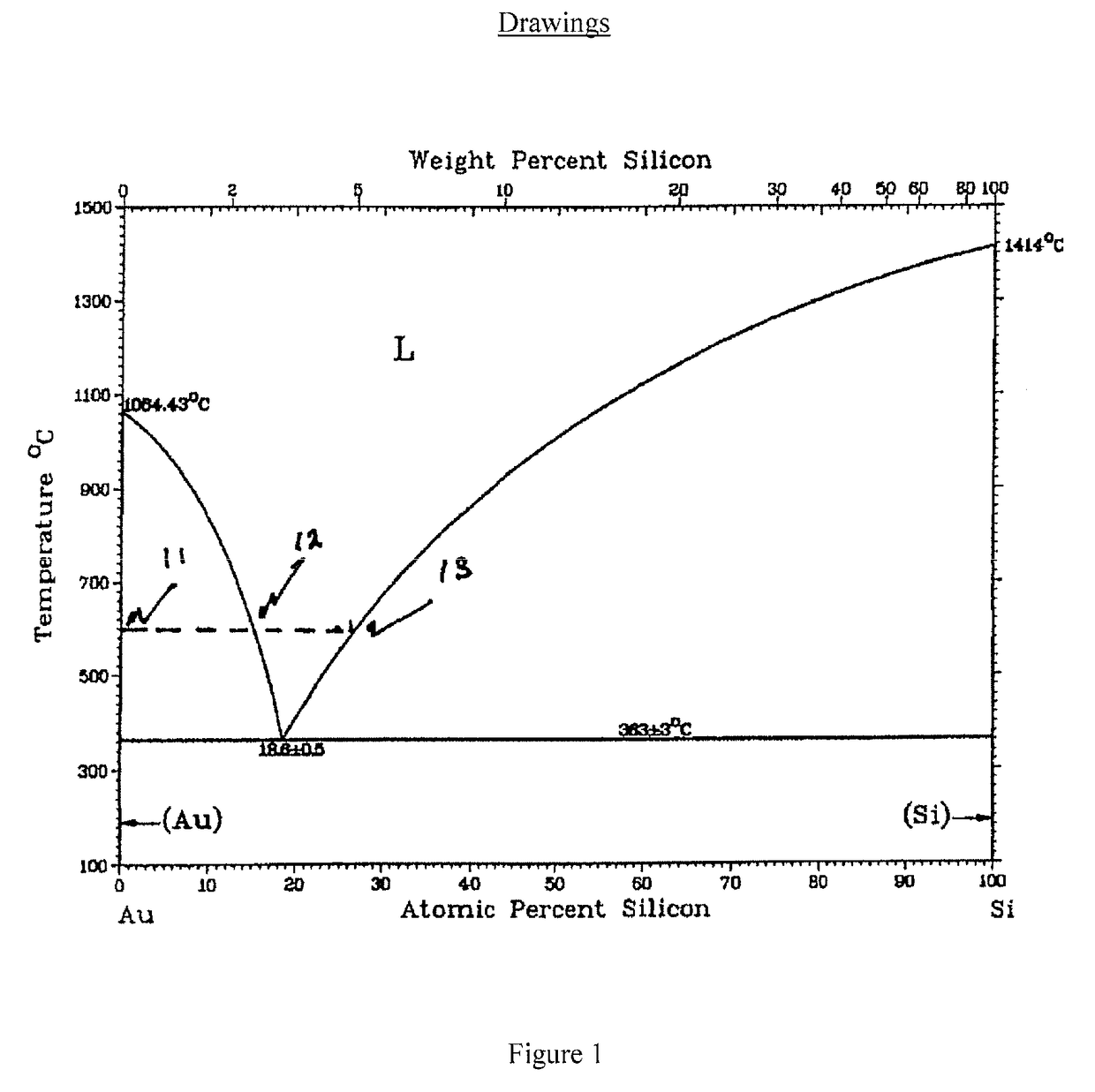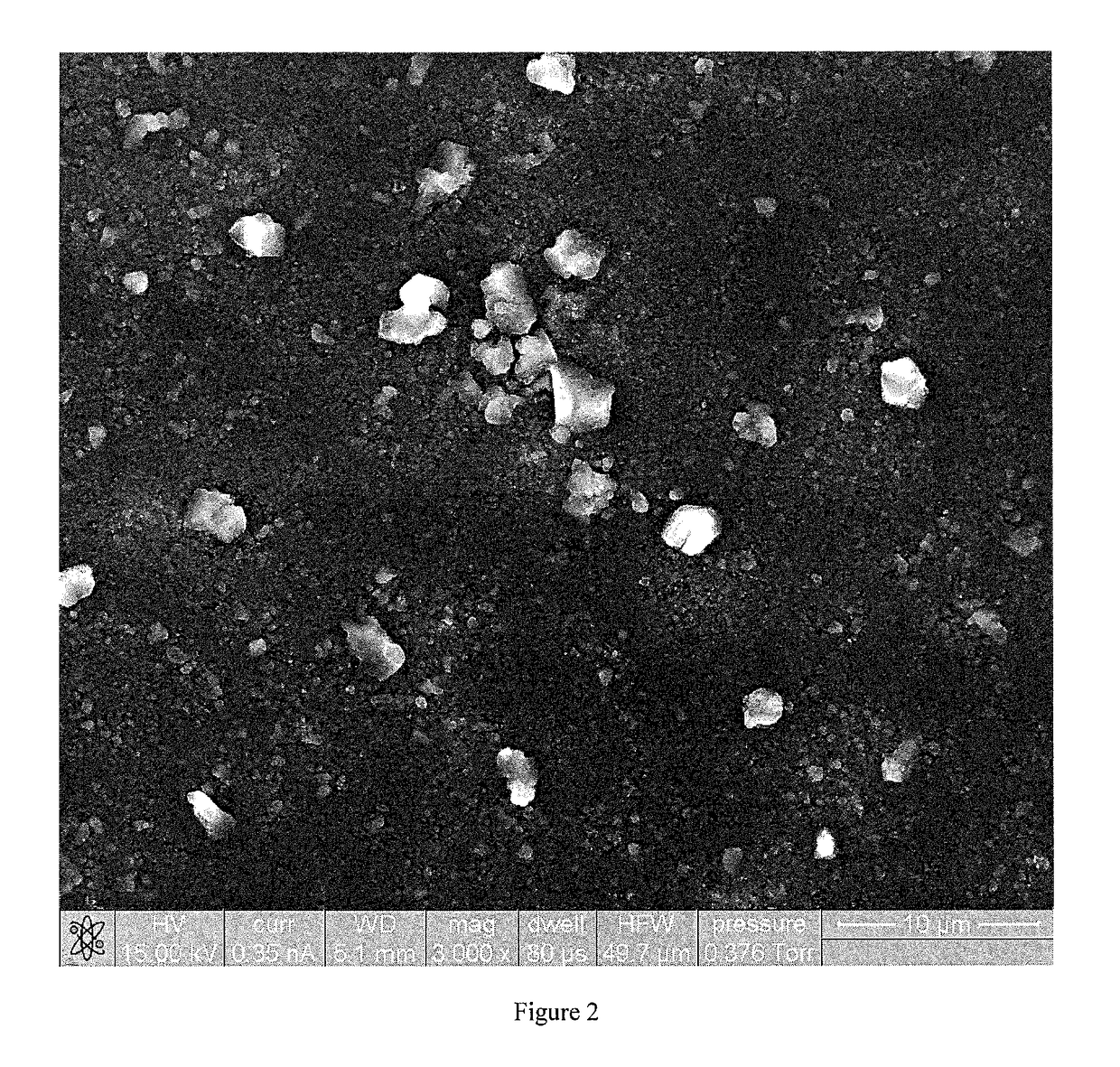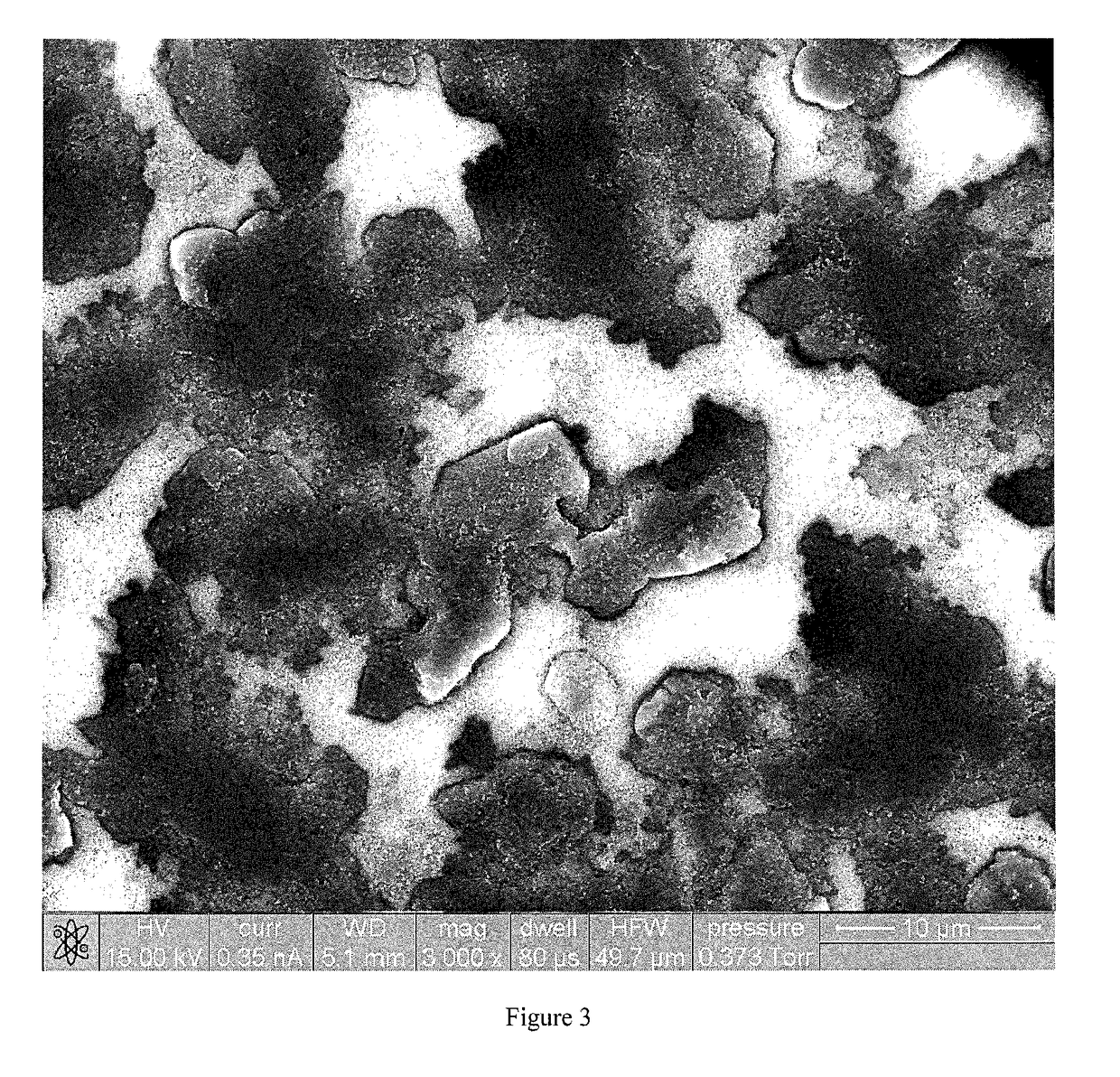Methods of growing heteroepitaxial single crystal or large grained semiconductor films and devices thereon
- Summary
- Abstract
- Description
- Claims
- Application Information
AI Technical Summary
Benefits of technology
Problems solved by technology
Method used
Image
Examples
example 1
[0061]A good high vacuum system with two electron beam guns, is used to deposit gold and silicon independently. A glass substrate coated with ion beam assisted deposited MgO film is held at temperatures between 575 and 600° C. These are nominal temperatures. It is understood to one skilled in the art that lower or higher temperatures can also be used depending upon the softening temperature of the glass substrate or the reaction kinetics of either gold or silicon with the metallic tape or its buffer layers when used as substrates. A thin gold film of approximately 10 nm thickness is deposited first. This is followed by a silicon film deposited at a rate of 2 nm per minute on top of the gold film. The ratio of the thickness of the gold and silicon films is chosen such that the final composition ensures that a point, marked 13, in FIG. 1 is reached. This point lies at the boundary between the two phase region of solid Si and a liquid Si—Au mixture. For example, for a 10 nm gold film f...
example 2
[0066]A good high vacuum system with two electron beam guns is used to deposit aluminum and silicon independently. A glass substrate or a Ni based substrate coated with a buffer layer of Al2O3 is held at temperatures between 600 and 615 degree ° C. These are nominal temperatures. It is understood to one skilled in the art that lower or higher temperatures can also be used depending upon the softening temperature of the glass substrate or the reaction kinetics of either aluminum or silicon with the metallic tape or its buffer layers when used a substrates. The eutectic Al—Si is used instead of the Au—Si example above. A thin Al film 6 nm thick is deposited on the Al2O3 followed by a 100 nm thick silicon deposition, and as described in example 1, above, the two phase region comprising of solid silicon and a liquid Si—Al mixture is reached. The deposition is stopped and the sample is slowly cooled to room temperature. Aluminum diffuses through the silicon film, driven by its lower surf...
example 3
[0068]We describe in this example how different methods of deposition can be combined to take advantage of highly textured films as described in example 1, above. The Si film produced from the deposition of example 1 is etched to remove the Au and then placed back into the vacuum chamber and p+-Si is deposited on this film. This latter layer serves two purposes: it provides a conducting layer for a photovoltaic device to be subsequently built on it and can be the starting point for a variety of differently configured photovoltaic devices as, for example, a nanowire photovoltaic device. Here a 2-3 nm thick gold film is deposited on the silicon using an electron gun. This 2-3 nm thick gold film breaks up into nanoparticles and is the starting point used by a number of investigators to use chemical vapor deposition to grow nanowires and use these nanowires for photovoltaic devices. The difference is that we show how an inexpensive buffered glass can be used rather than a relatively exp...
PUM
 Login to View More
Login to View More Abstract
Description
Claims
Application Information
 Login to View More
Login to View More - R&D
- Intellectual Property
- Life Sciences
- Materials
- Tech Scout
- Unparalleled Data Quality
- Higher Quality Content
- 60% Fewer Hallucinations
Browse by: Latest US Patents, China's latest patents, Technical Efficacy Thesaurus, Application Domain, Technology Topic, Popular Technical Reports.
© 2025 PatSnap. All rights reserved.Legal|Privacy policy|Modern Slavery Act Transparency Statement|Sitemap|About US| Contact US: help@patsnap.com



